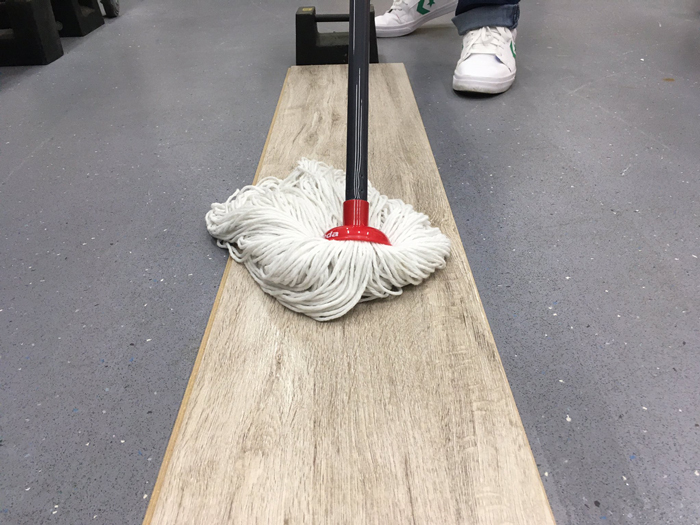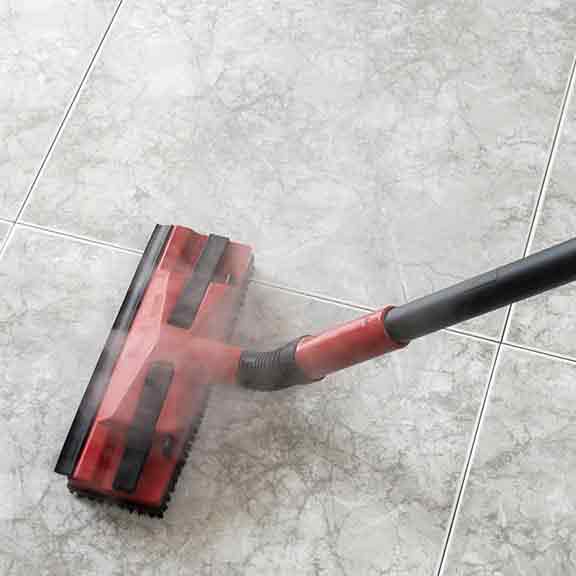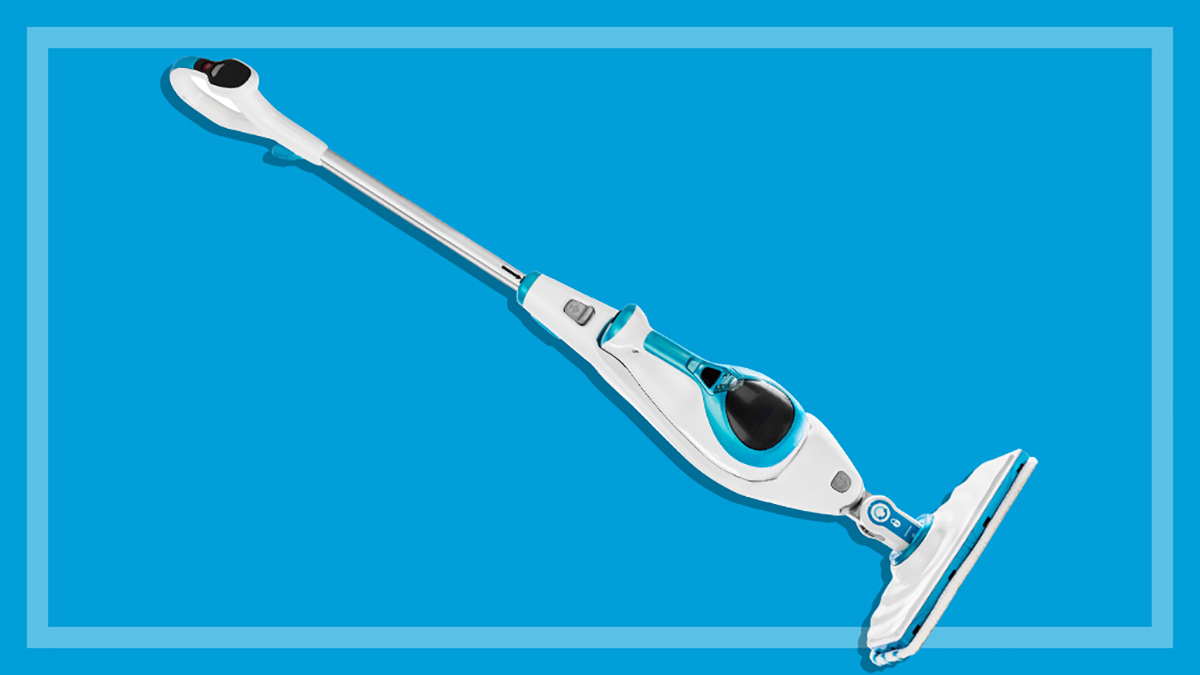Get our independent lab tests, expert reviews and honest advice.
Steam mopping vs regular mopping – which is best?

Mopping your tiles or floorboards is not the most enjoyable of chores, so it’s natural you’d want to investigate any options to make it easier.
Enter the steam mop, the contraption hailed as a premium floor cleaner – powered by electricity to pump steam onto your floors and loosen grime that is then wiped away by a cloth cleaning head. No extra chemicals required. Sounds like a miracle worker, right?
But is this another modern appliance you don’t really need? And would a traditional mop and bucket do the job just as well?
CHOICE experts put a regular mop and a steam mop head to head to assess the pros and cons of each to help you decide if a steam mop is worth the investment.
Performance
Which leaves behind the least water?
One of the bugbears of mopping is unsightly streaks of water being left behind and having to wait for your floors to dry before walking over them again.
When assessing which type of mop leaves behind the least water, CHOICE experts say a steam mop usually comes out on top.
Our experts conducted a simple ‘floor wetness’ test by mopping a piece of laminated flooring with each type of mop, then measuring how long it takes for it to dry.
When assessing which type of mop leaves behind the least water, CHOICE experts say a steam mop usually comes out on top
While both the steam mop and the regular mop left behind a similar amount of water in our test, the steam mop cleaned a larger area (as it has a wider head), so the regular mop would leave behind more water if cleaning the same-sized area.
Of course, this depends on how hard you squeeze the regular mop out each time – if you can’t wring much water out, you’ll be left with puddles on the floor. With a steam mop, you’re saved the extra work of squeezing it out every few strokes.

Which is better at removing stains and mopping spills?
Our testing has found that all steam mops remove stains fairly well, with marginal differences, and are likely slightly better than a regular mop and bucket due to the heat and vapour produced by the steam.
The other bonus is that they clean without the need for any additional chemicals or cleaning products (although, we do usually say with any kind of mop that floor cleaners are often useless anyway, often performing no better than plain water).
Steam mops are no good at mopping up large spills however, as they have no suction power (to mop up spills you need a traditional mop and bucket or a wet and dry vacuum).
Regardless of the type of mop, CHOICE experts recommend sweeping up or wiping excess dirt or stains from the floor first so you don’t just spread the muck around.
Convenience and practicality
Steam mops are undoubtedly more convenient and easier to use than a traditional mop.
If you struggle with filling a bucket with water and carrying it to the room where you need to mop, squeezing out a mop and then emptying a bucket full of dirty water, a steam mop may be a better option.
They do require access to a power point, however, and you can only mop as far as the electrical cord will reach. And although they’re not complicated appliances to use, you will have to check instructions for filling and emptying the water, how to leave it safely idle, and how to use any extra features or attachments.
Steam mops require access to a powerpoint and you can only mop as far as the electrical cord will reach
When we review steam mops in our CHOICE labs, we give each model an ‘ease of use’ score to help you understand which ones are the most practical.
We look at factors such as ease of filling the water tank, ease of moving the mop head on the floor, and whether or not it gets tiring, ease of using and accessing the controls and attaching the mop pad, and a steam mop reach score (the distance between the power point and the tip of the steam head, which also includes the hose and the wand).
The latest CHOICE steam mop review includes the results of our detailed testing of 36 steam mops, ranging in price from $49 to over $1000. CHOICE members can find out which models we recommend, as well as reviews in over 200 other product categories.
Can you use a steam mop on wooden floors?
There are certain types of floors that a steam mop can potentially damage. Some manufacturers state that you can use steam mops on sealed wooden floors that, in theory, should be able to withstand the moisture and heat from a steam mop; however, others advise against it.
A steam mop should not be used on unsealed wooden floors or laminate, as the steam can weaken the adhesive or cause floorboards to buckle.
Check the manufacturer’s instructions before applying a steam mop to your timber floor.
Cost
Steam mops are clearly the more expensive option here, although, as with most products, there are various models available at different price points. We’ve tested steam mops that cost anywhere from $49 up to a few hundred dollars or more.
While some of the cheaper models perform well in our tests, generally you’ll find that the more expensive steam mops have more sophisticated controls and added features (such as multiple cleaning attachments or accessories for cleaning windows or upholstery).
A mop and bucket can be as cheap as chips
In contrast, a mop and bucket can be as cheap as chips. Plus, you won’t have to pay for the electricity to power it.
If you’re keen on a traditional, regular mop, there are many types available which also come at different price points. To find out how well they all work, our tester, Matthew Tung, reviewed several mop types including spray mops, cotton mops, flat mops, spin mops, strip mops and squeeze mops. He assessed how easy they were to move around, how well they removed stains and how wet they left our floors. Read the results of our regular mop test.

Hygiene
Many steam mop manufacturers claim that the heat of the steam is able to kill bacteria on the floor, saying that it’s a faster and more sanitary way to clean when compared with sloshing a regular mop head around on your kitchen floor.
But CHOICE experts say a steam mop will kill no more bacteria than a regular mop with soap and warm water or a wipe over with a sponge.
A steam mop will kill no more bacteria than a normal mop
With either type of mop, any bacteria picked up from the floor will transfer to the mop’s head.
Although the steam generated by the steam mop might be enough to destroy the bacteria or virus collected on the pad, the steam generator and pads for each model differ in effectiveness. Make sure you throw the pads in the washing machine afterwards with laundry detergent to ensure any bacteria is eliminated.
Sustainability: Which is better for the environment?
As there are so many different types and quality of ‘regular’ mops available, it’s difficult to definitively say which option is better for the environment.
Although a steam mop helps you reduce the use of chemical cleaning products in your home, they are an electrical appliance that use power and will be classified as electrical waste when you dispose of them.
Before you buy a steam mop, consider a product that is good quality and likely to last
Electrical waste (or e-waste) can cause serious environmental problems due to the fact it can be toxic, is not biodegradable and accumulates in the environment, polluting our eco-system. When buying a steam mop, look for a product that is good quality and likely to last.
Regular mops may be made out of a range of materials such as cotton, wood or plastic, all of which can have different impacts on the environment throughout the product’s production and lifetime.
Opting for a simple mop made from natural, renewable materials, which has a replaceable mop head, that you can use for many years, may be a more sustainable choice than adding another electrical appliance to your household.
Discover what we found out about steam mop brand reliability in our steam mop Best Brand survey.
The verdict
They’re more expensive to buy, but steam mops can be really effective floor cleaners that are generally more convenient than a mop and bucket, so they are a great choice in particular for people with mobility issues.
They’ll likely leave less water behind, leaving a clean and shiny, streak-free floor, but they don’t have any magic bacteria-busting powers over a regular mop and bucket.
If the convenience factor is important to you, ensure you choose a steam mop model that scores well in CHOICE steam mop reviews for ease of use.






